Key Points
- The rack pull is a variation of the deadlift, but it can be classified as its own exercise.
- The largest and most obvious difference between rack pulls and deadlifts is the range of motion.
- Rack pulls primarily work the upper back and the glutes. The deadlift targets the whole body, particularly the legs, upper back and core.
If you’ve been in the gym and have noticed some people doing deadlifts in the squat rack, you may have wondered what they were doing.
In this article, we’re going to explain the differences between rack pull vs deadlift, so you can figure out if it’s something great to add to your workout or not.
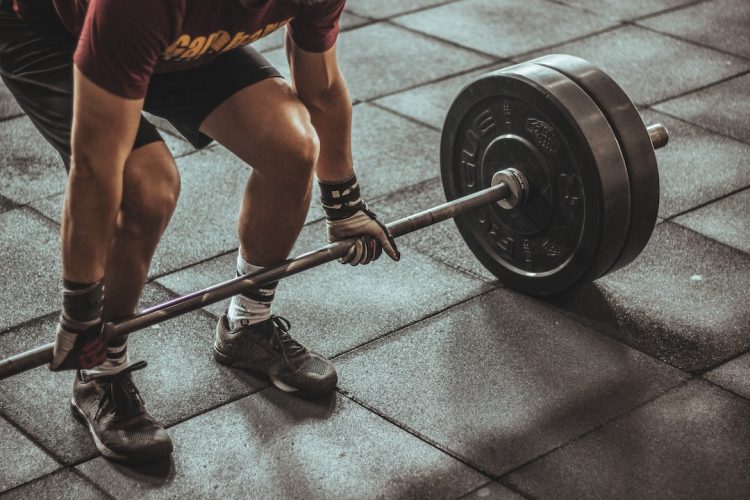
The rack pull is a deadlift variation that involves shortening the range of motion to focus on the top half of the rep.
It’s popular amongst powerlifters and bodybuilders to improve their deadlift power, but it also has a bunch of other benefits.
In This Article
Rack Pulls
- How to Do Rack Pulls
- Technique Tips for Rack Pulls
- Rack Pulls Muscles Worked
- Rack Pulls Common Mistakes
- Benefits of Rack Pulls
- Drawbacks of Rack Pulls
Deadlifts
In this article, I’m going to run through everything you need to know when it comes to rack pull vs deadlift. The differences, how to do them, technique tips, common mistakes, their benefits and drawbacks, and which one is better for your training.
Rack Pull vs Deadlift – Key Differences
The rack pull is a variation of the deadlift, but it can be classed as its own exercise.
Both of them are hip-hinging movements that target the lower body and the core. However, there are some key differences between the two movements.
1. Range of Motion
The largest and most obvious difference between rack pulls and deadlifts is the range of motion.
Rack pulls are performed from knee height, which leads to much shorter reps than deadlifts, which are performed from the floor. Rack pulls focus on the top half of the rep and they completely remove the first portion of the deadlift.
2. The Weight Used
With the bar being elevated to knee height, you can usually pull a much heavier weight with rack pulls compared to deadlifts.
For this reason, rack pulls are great to enhance your deadlift power and strength, particularly if you struggle with the second half of the reps.
3. Muscles Targeted
Rack pulls focus more on the quadriceps because of the shortened range of motion. Deadlifts, on the other hand, work the quads, glutes, and hamstrings due to the range of motion ranging from the floor all the way up the standing position.
Rack pulls emphasise the lats and traps. Deadlifts focus more on the mid to lower back, particularly in the bottom half of the rep.
How to Do Rack Pulls
If you can deadlift with proper form, you will be able to do rack pulls. They are pretty much the exact same as doing a set of deadlifts within just the top half of the reps.
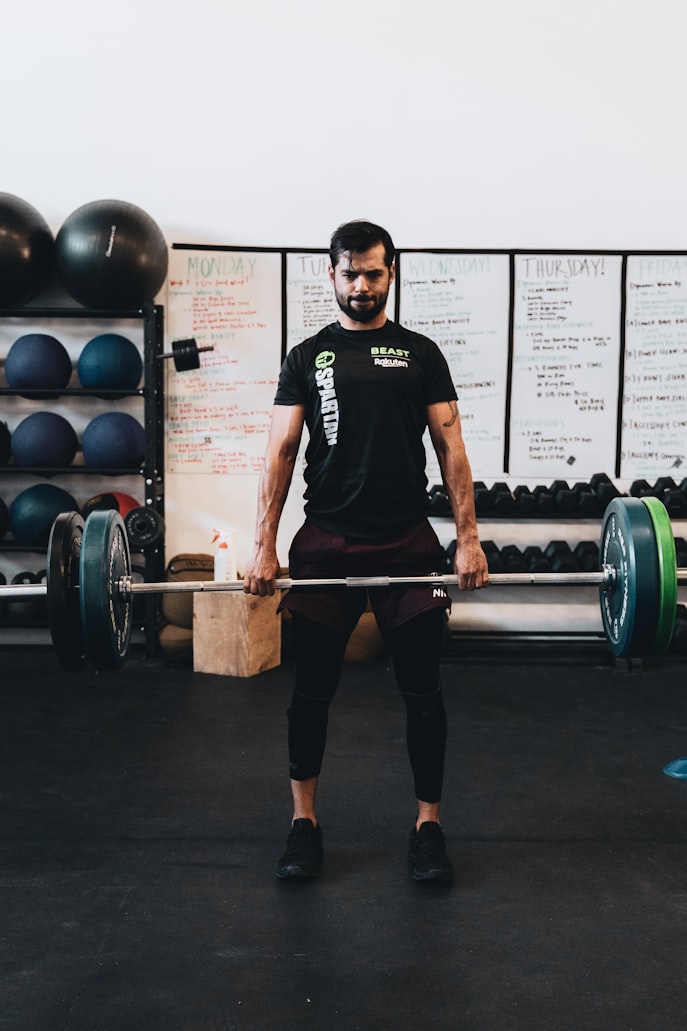
- Set up the squat rack so that the pins are around knee height. Load up a barbell to your desired weight.
- Step up to the bar, so it is in contact with your shins.
- Hinge at the hips to bend and grip the bar tightly with both hands.
- Squeeze your lats and come up to a standing position, pulling the bar with you. This should be a powerful and explosive movement.
- Return the bar back to the pins and repeat the movement for the required number of reps and sets.
Technique Tips for Rack Pulls
Here are my top technique tips for rack pulls.
- Stand so that the bar is in line with your midfoot.
- Keep your body close to the bar and your upper legs parallel to the floor.
- As you lockout at the top, squeeze your glutes to prevent hypertension of the lumbar spine and push your shoulder blades together to activate your lats.
Rack Pulls Muscles Worked
Rack pulls primarily work the upper back and the glutes. In particular, the gluteus maximus and the adductor magnus are highly activated in this exercise due to the amount of knee flexion required.
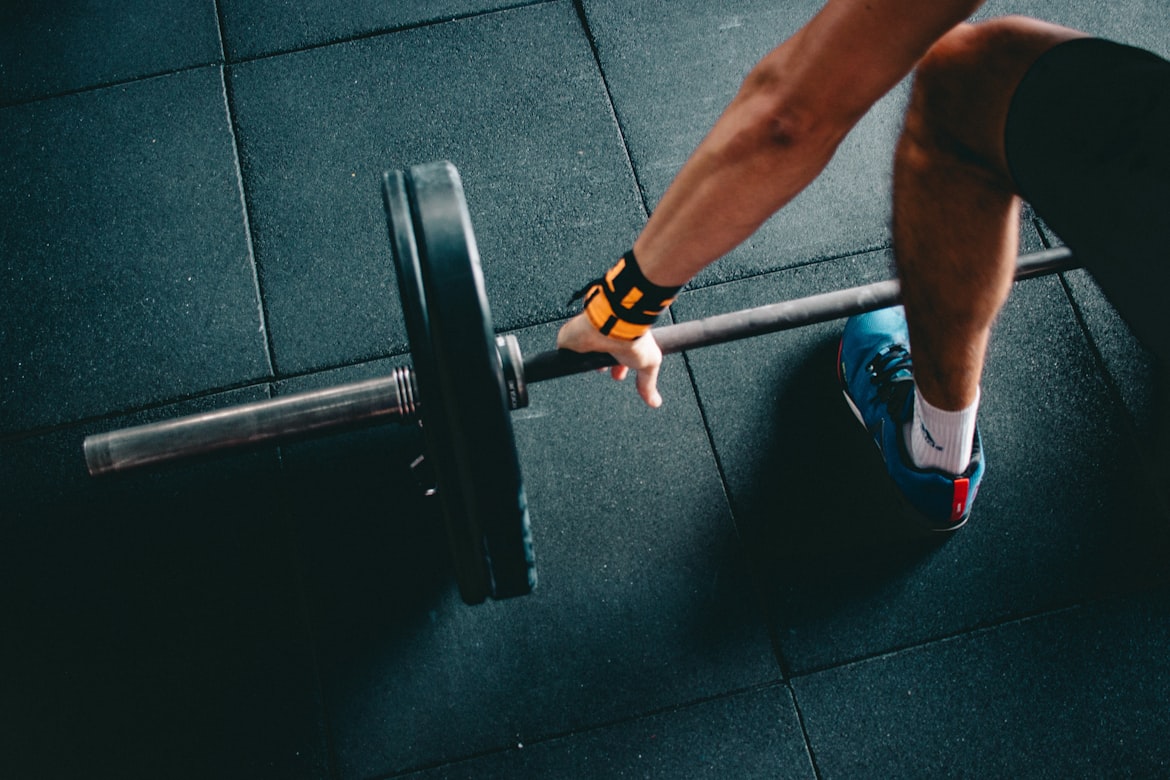
The spinal stabilizers and spinal erectors are activated during rack pulls, more so if you are taller and take a more bent over stature.
And of course, the lats, traps, rhomboids, hands, and forearms are activated in order to keep the bar in place and powerfully pull it off the squat rack.
Common Mistakes to Avoid in Rack Pulls
1. Hyperextension of the Lumbar Spine
Similar to deadlifts, rack pulls require a lockout at the top of the rep. With any exercise that requires a lockout, I have found that many of my clients try to lean back. This shifts the force from your glutes into your lower spine. This not only puts you at risk of injury right there and then, but it can cause issues for you further down the line if you do it regularly.
Instead of leaning back and hyperextending your spine as you reach the lockout part of the rep, squeeze your glutes and focus on keeping your torso vertical.
2. Bouncing
The barbell should always be pulled from a dead stop. If you bounce the bar off the pins between each rep, you are reducing the tension in your muscles. This makes the exercise much less effective for you.
3. Standing Too Far Away from the Bar
The barbell needs to be touching your shins before you begin to lift it. It should be right next to your body, and it needs to stay this way throughout the rep. Standing too far away from the barbell will cause your back to round as you have to bend over even further to grip it. This puts excess pressure through your spine and increases the risk of injury.
Benefits of Rack Pulls
Are rack pulls really good? Rack pulls are a great exercise for strengthening the back and building cardiovascular fitness. Let’s check out the benefits of rack pulls.
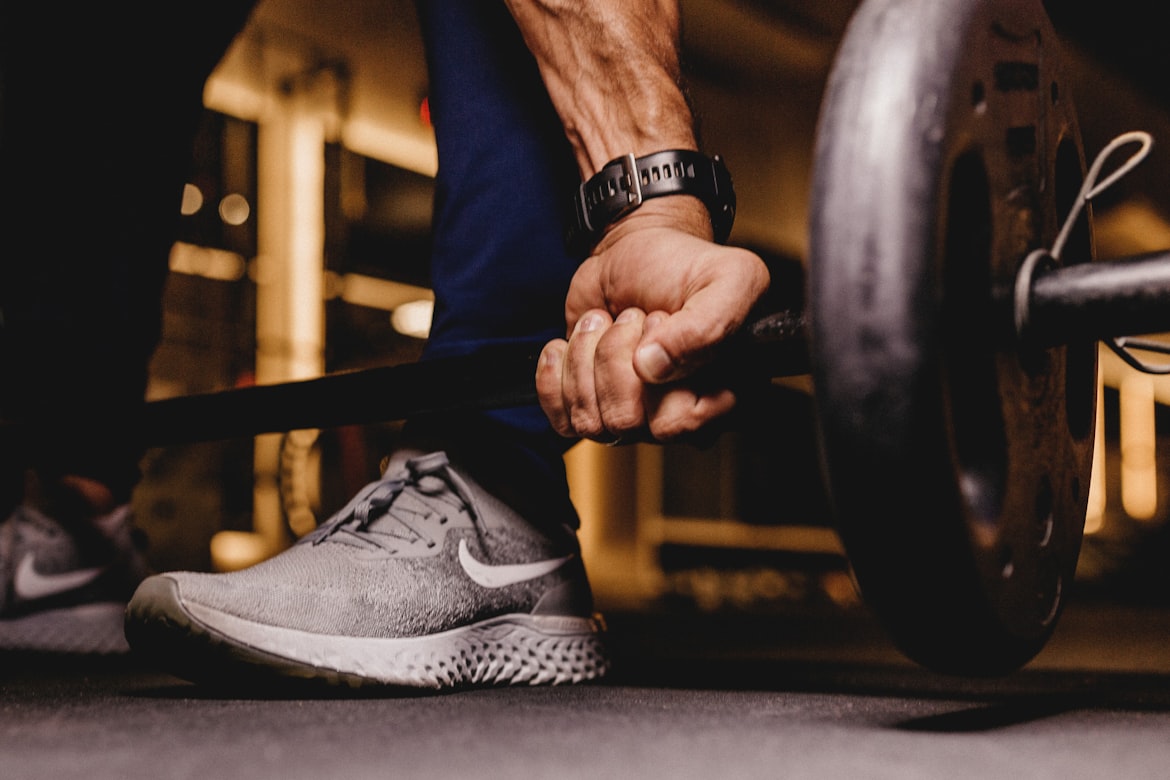
1. They Increase Strength
Rack pulls can be significantly overloaded, making them a great exercise to increase your strength and power. In particular, they can improve strength in your upper and lower back and the glutes.
2. They Improve Your Deadlift
Rack pulls are pretty much a shortened deadlift. They help you to practice the top half of the rep from knee height to the standing position. If this is the weakest area of your deadlifts, rack pulls are perfect to work on this portion of the rep in isolation.
Give yourself a few weeks to do regular rack pulls and you will see massive improvements in your deadlifts. Deadlift back angle is one of the biggest technique cues that will help you improve your deadlifts.
3. They Can Improve Grip and Forearm Strength
If you have weak grip strength, rack pulls can help. The heavy weight can work your hands and forearms, rack pulls can overload the small muscles in this area, helping to build their strength and resilience more so than isolating hand and wrist exercises.
Drawbacks of Rack Pulls
1. They Require Decent Grip Strength
Even though you get a good wrist and forearm workout from doing rack pulls, you require a decent level of strength in this area to begin with. Without good grip strength, the bar will slip from your hands in the middle of your set of rack pulls. This is not only dangerous but also frustrating.
You can always use straps or chalk to help with your grip until your strength improves to the point where you no longer need the additional support.
2. There is a Reduced Range of Motion
The range of motion is massively reduced in rack pulls compared to deadlifts. This decreases the ability of the exercise to stimulate muscle growth and strength gains. Yes, you can still overload the exercise and target your posterior chain, but the muscles won’t get as much of a workout due to the limited range.
3. They Require a Squat Rack
Unlike deadlifts where all you need is a barbell and the floor, rack pulls require a squat rack. Most people don’t have access to a squat rack unless they’re at the gym, making the exercise less accessible than deadlifts.
How to Do Deadlifts
Deadlifts can be difficult to pick up but if follow the step-by-step guide below, you’ll be off to a good start. If you’re still unsure when you get into the gym, ask a personal trainer to show you how to do the exercise, or take a friend that knows what they’re doing. Also, there are various types of grips doing this exercise.
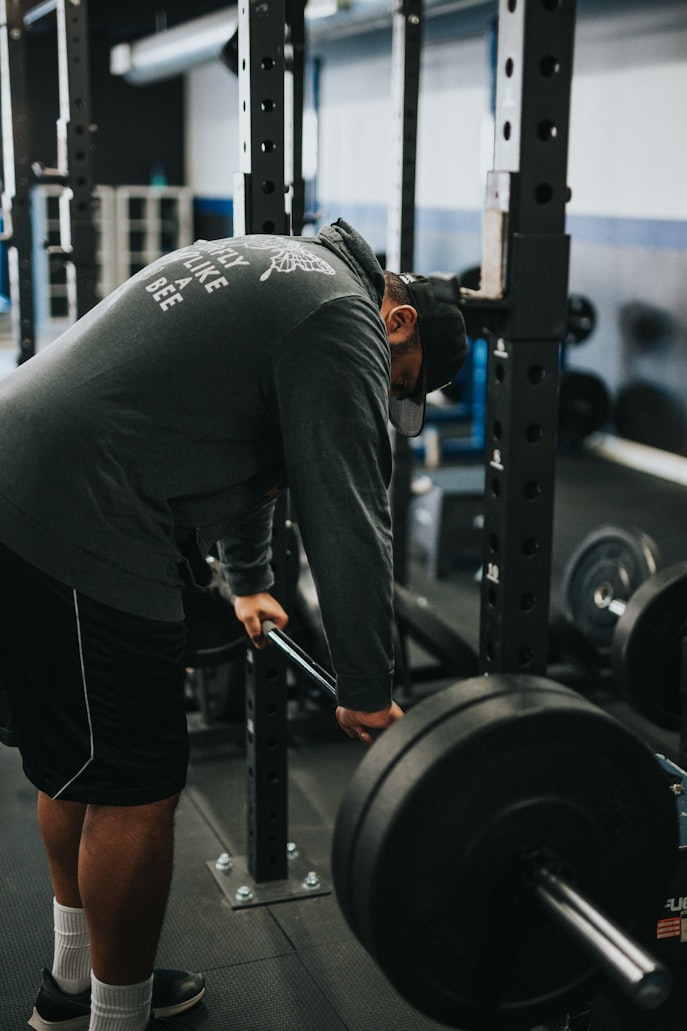
- Load a barbell to your desired weight.
- Stand close to the barbell with your feet shoulder-width apart.
- Bend down to grip the bar just outside your legs with an overhand grip
- Contract your lats to pull your shoulders back. Take a deep breath, embrace your core, and lift the bar up to a standing position.
- Pause for a second before lowering the bar back down to the ground.
- Repeat for the desired number of reps and sets.
Technique Tips for Deadlifts
Here are some top technique tips to help you perfect your deadlift form.
- Imagine you are trying to snap the bar in half to grip it more tightly.
- Keep your spine and neck neutral throughout. Do not look up at yourself in the mirror!
- Keep the bar as close to your legs as possible.
- Drive through your heels to pull the bar up.
- Lower the bar under control to activate the lower body posterior muscles.
Deadlifts Muscles Worked
The deadlift targets the whole body, particularly the legs, upper back and core. The large amount of knee flexion forces the load into the posterior chain as you lift the bar, working the glutes and hamstrings more so than rack pulls.

The primary muscles targeted in the deadlift include
- The gluteal muscles (gluteus maximum, gluteus medius, and gluteus minimus)
- The hamstrings (biceps femoris, semitendinosus, and semimembranosus)
- The quadriceps (rectus femoris, vastus lateralis, vastus medialis, and vastus intermedius)
- The latissimus dorsi
- The erector spinae [1]
The deadlift also targets a number of secondary muscles, including the traps, core, spinal stabilisers, hands, and forearms.
Common Mistakes to Avoid in Deadlifts
1. Rounding the Lower Back
There are so many mistakes I could point out with deadlifts, but the most common by far is rounding of the lower back.
Assuming you’re aware of how to properly execute a deadlift, this usually happens when you either use way too much weight or you stand too far away from the bar.
Additional muscles are recruited to help you pull the weight up and the shoulders come forwards, which places a lot of stress on your lumbar spine.
2. Letting the Hips Rise First
When you are lifting the bar from the floor, there’s a tendency to let your hips rise up before the rest of your body. This can lead to rounding of the upper or lower back. When your hips rise too fast, it puts stress through the spine and can strain the glutes. You can also use a lifting belt during deadlifts to help lift more with safety and stability.
3. Using Momentum
It’s easier to get the momentum going when you’re repeatedly lifting a heavy bar up and down. You can start to bounce the bar up off the floor between each rep, and it feels great because you’re smashing out the reps.
However, if you slow the reps down and lower the bar under control, you will feel the muscles working. You will gain way more benefits from deadlifting by focusing on each rep as it comes, instead of bouncing the bar around!
Benefits of Deadlifts

1. They Target the Quadriceps and Hamstrings
Deadlifts are much more focused on the lower body compared to rack pulls. Due to the starting position of the deadlift, there is a much larger degree of knee flexion required. The quads, therefore, have to work harder to extend the knee as you lift the bar off the floor. The glutes are highly activated, specifically the gluteus maximus [2]. This also makes deadlifts a better replacement for squats if you don’t have access to a squat rack.
2. They Improve Power and Strength
Deadlifts are one of the best exercises to stimulate loading across a longer range of motion [3]. They can be significantly overloaded so you can work in the 1-5 rep range to really focus on increasing your power and strength. Deadlifts are beneficial for athletes to enhance strength in the quadriceps, hamstrings, and gastrocnemius in particular [4].
3. They Work the Whole Body
There’s a reason that deadlifts are one of the core powerlifting exercises. They target the whole body, making them an incredibly effective exercise. The science behind deadlifting every day is muscle fibers are activated and degraded (broken down) followed by an elevated response of resistance training induced muscle protein synthesis.
The main muscles that are targeted in the deadlift are mentioned above. If you have longer limbs, you may recruit your glutes and spinal erectors more or less depending on your starting position.
Drawbacks of Deadlifts
1. They Require a Higher Level of Mobility
Deadlifts require much more mobility than rack pulls. This makes it difficult for people who have poor mobility. You can try deadlifting from a higher position (a couple of inches off the floor) to start off with and slowly work your way down until you can lift the barbell from the floor.
2. They Require a High Level of Motor Control
You need to have a good level of motor control to keep the bar tightly in place as you deadlift. With it being a full-body exercise, you also need good body awareness so you can adjust your form accordingly. This is especially difficult if you’re a beginner.
3. They’re Harder to Recover From
Because of the heavy weight and the high number of muscles that are recruited during deadlifts, they are very taxing on the whole body. The exercise is very demanding and can leave you feeling sore for days after. Therefore, deadlifts are more difficult to recover from compared to rack pulls and may require a longer rest period. This makes it harder to get into a high volume of training.
Which is Better for You – Rack Pull vs Deadlift
Personally, I would always choose deadlifts over rack pulls if you are able to do them properly. However, if you find the top portion of the reps really difficult, and you feel that it’s limiting your deadlift progression, practicing rack pulls is the perfect way to overcome this.
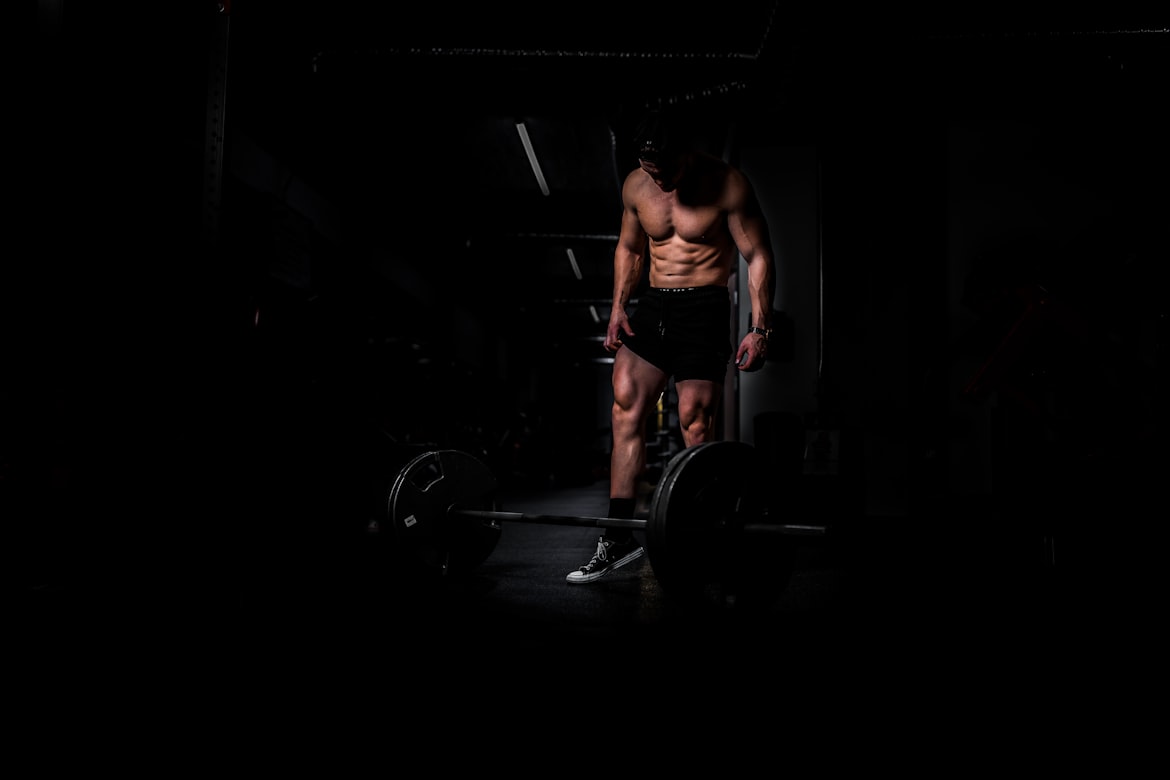
If your mobility is poor and you struggle to properly perform deadlifts, rack pulls can help you build power and strength without compromising your form. If you can work on a mobility routine at the same time as practicing rack pulls, I highly suggest doing so. This way, you can progress onto deadlifts whenever you feel ready.
Frequently Asked Questions
t’s a good idea to do rack pulls or deadlifts at the start of your workouts because they are compound lifts that will take a lot out of you. When you significantly overload them, you’re going to feel pretty tired afterward. So, to maximize your gains from these exercises, it’s a good idea to get them out of the way as soon as you get to the gym.
The following exercises have been shown to activate this muscle to a high level. They may, therefore, be good alternatives to deadlifts if your goal is to grow your glutes. Some good alternatives include step ups, hex bar deadlifts, traditional or rotational barbell hip thrust, split squats and lunges.
If you’re a beginner, I recommend checking out some videos before you head to the gym to see what each exercise looks like. Once you are in the gym, grab a trainer to show you how to do the exercise properly. Always start with a weight that is fairly easy for you and you can work up from there.
Final Thoughts
Rack pulls vs deadlift is an interesting discussion. They’re both hip-hinging movements that use several muscles to build strength. As I discussed, they each have their pros and cons. Consider these before you decide on rack pulls vs deadlifts. And of course, you can always do both of them if you can’t pick just one!
References
[1] Martin Fuentes I., Oliva-Lozano JM. and Mayor JM. Electromyographic activity in deadlift exercise and its variants. A systematic review. PLoS One. 2020 Feb 27;15(2):e0229507. doi: 10.1371/journal.pone.0229507. eCollection 2020.
[2] Neto WK., et al. Gluteus Maximus Activation during Common Strength and Hypertrophy Exercises: A Systematic Review. J Sports Sci Med. 2020 Feb 24;19(1):195-203. eCollection 2020 Mar.
[3] Schellenberg F., Taylor WR., and Lorenzetti S. Towards evidence based strength training: a comparison of muscle forces during deadlifts, goodmornings and split squats. BMC Sports Sci Med Rehabil. 2017; 9: 13. doi: 10.1186/s13102-017-0077-x.
[4] Escamilla RF., et al. An electromyographic analysis of sumo and conventional style deadlifts. Med Sci Sports Exerc. 2002 Apr;34(4):682-8. doi: 10.1097/00005768-200204000-00019.
More on Deadlifts:





